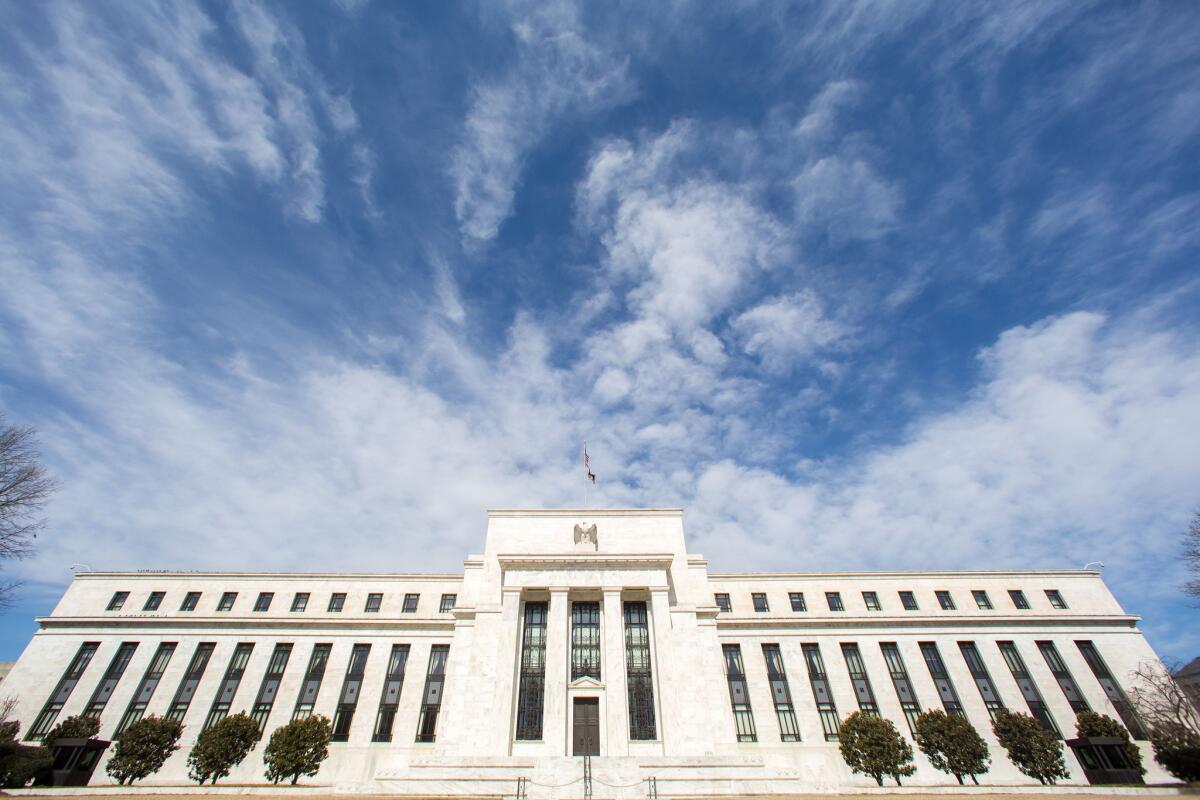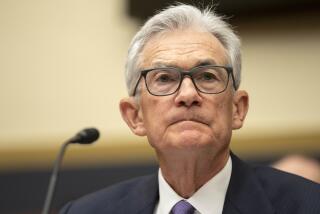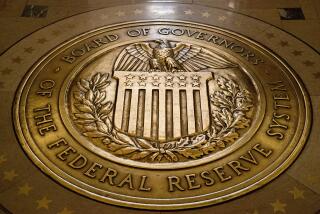Fed’s Lacker says there’s ‘strong’ case for June interest rate hike

- Share via
Reporting from Washington — A top Federal Reserve policymaker said some of the recent economic weakness probably was caused by bad weather and insisted that a “strong” case for raising interest rates in June still exists.
Jeffrey M. Lacker, president of the Federal Reserve Bank of Richmond, Va., said an increase of a “notch or two” in the near-zero-percent benchmark short-term rate would be “less like taking away the punch bowl and more like just slowing down the refills.”
“We will still be spiking the punch — just not quite as rapidly as we have been,” he said in a speech Tuesday at the Greater Richmond Chamber of Commerce’s Spring Regional Forum.
Lacker, one of 10 voting members of the policymaking Federal Open Market Committee (FOMC), said the economy has improved enough from the Great Recession to justify the first interest rate hike since 2006. The key federal funds rate has been at or near zero since late 2008 to stimulate the economic recovery.
“My own view is that, given what we know today, a strong case can be made that the federal funds rate should be higher than it is now,” he said.
Noting that the committee’s March statement took a rate hike in April off the table, Lacker said, “I expect that, unless incoming economic reports diverge substantially from projections, the case for raising rates will remain strong at the June meeting.”
Fed Chairwoman Janet L. Yellen said in a speech Friday in San Francisco that the central bank probably would take a more cautious approach to raising rates than in the past.
Given her recent comments, many analysts are not expecting a rate hike until September as inflation remains very low.
On Monday, the Commerce Department reported that inflation for the 12 months ended Feb. 28 was 0.3%, well below the Fed’s annual target of 2%.
But Lacker said the weak inflation was caused by the steep decline in energy prices last year. Last spring, before oil prices began plunging, annual inflation was 1.7%.
“Thus, I remain confident that inflation will return to the FOMC’s 2% goal over time, despite the low current readings on inflation,” he said. “The focus for monetary policy should be on the outlook for inflation rather than actually realized inflation.”
Fed policymakers also could be hesitant to start raising rates given lackluster first-quarter economic data so far.
Orders for durable goods fell sharply in February, the third decline in four months for longer-lasting products, such as autos and dish washers. And Monday’s Commerce Department report showed consumer spending rose just 0.1% in February after a 0.2% drop the previous month.
Lacker said he expected the economy to expand 2% to 2.5% this year, about the same as in each of the previous three years.
He said economic statistics can be “quite volatile on a month-to-month or even quarter-to-quarter basis.”
“For example, readings on some indicators have been unexpectedly weak in recent weeks, some of which may be attributable to unseasonably adverse weather,” Lacker said.
“It’s too soon say how much, however, and the more prudent approach is to look through very short-term fluctuations and assess emerging trends based on a longer run of data,” he said.
The Fed is expected to raise interest rates just 0.25 percentage points at a time. Lacker said such small hikes would mean “the Fed still will be supplying quite a bit of stimulus to economic activity” for “a considerable period.”
Follow @JimPuzzanghera on Twitter
More to Read
Inside the business of entertainment
The Wide Shot brings you news, analysis and insights on everything from streaming wars to production — and what it all means for the future.
You may occasionally receive promotional content from the Los Angeles Times.











